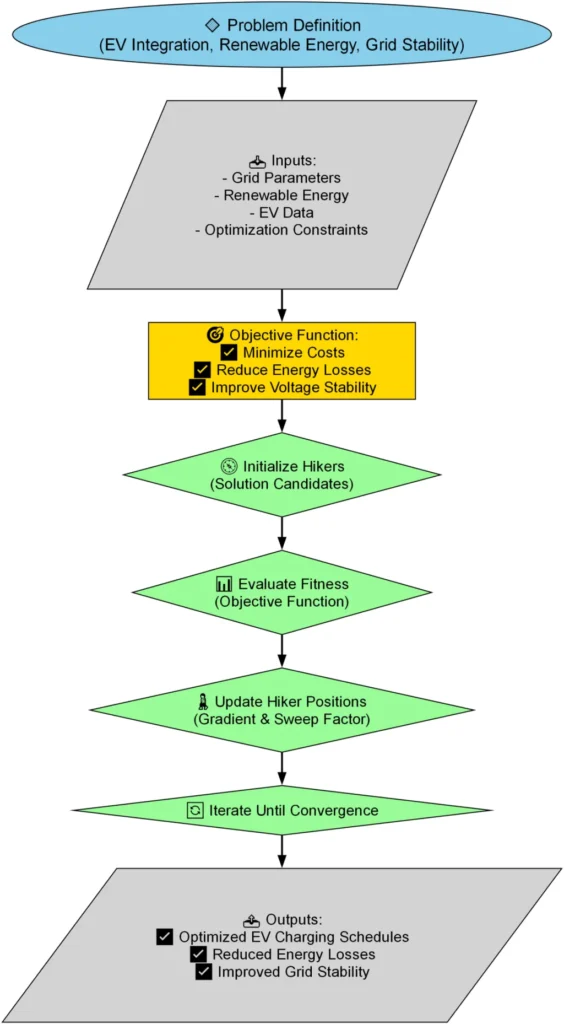In the rapidly evolving energy landscape, the integration of electric vehicles (EVs) into power distribution networks presents both challenges and opportunities. A recent study published in the journal *Engineering Results* offers a promising solution to optimize EV parking lot management, potentially revolutionizing grid performance and efficiency. Led by Naser Rashnu from the Department of Electrical Engineering at the Islamic Azad University in Tehran, Iran, the research introduces a quantum-based optimization framework that could significantly reduce power losses and improve voltage profiles in distribution networks.
As the penetration of EVs and renewable energy sources continues to rise, the need for coordinated EV charging and discharging becomes increasingly critical. Traditional optimization techniques, such as Genetic Algorithms (GA) and Particle Swarm Optimization (PSO), often fall short when dealing with the nonlinear, high-dimensional nature of EV-grid interaction problems. Enter Quantum Annealing (QA), a cutting-edge approach that leverages quantum tunneling and parallelism to efficiently explore complex solution spaces.
Rashnu and his team formulated the EV parking scheduling task as a Quadratic Unconstrained Binary Optimization (QUBO) problem, making it suitable for quantum processing. Simulation studies conducted on IEEE 13-, 33-, and 69-bus systems demonstrated that QA significantly outperformed traditional methods. In the 13-bus network, for instance, QA reduced power losses by an impressive 72.07% and voltage deviation by 87.5%. The 33- and 69-bus systems also saw notable reductions in power losses, with 42.1% and 46.6% respectively.
“The results show that our quantum-based approach is not only scalable but also highly effective in handling real-time EV integration,” Rashnu explained. “This method supports voltage stability and reduces operational costs, making it a valuable tool for the energy sector.”
The implications of this research are far-reaching. By optimizing EV charging and discharging schedules, the proposed framework can facilitate cleaner energy usage and more intelligent urban EV infrastructure planning. This is particularly relevant as cities worldwide strive to reduce their carbon footprints and transition to sustainable energy solutions.
However, the study acknowledges certain limitations. The reliance on quantum simulators rather than physical hardware and the assumption of deterministic EV behavior are areas that require further exploration. Future research will delve into hybrid quantum-classical implementations and stochastic modeling using real-world data.
As the energy sector continues to evolve, the integration of quantum computing techniques like QA could pave the way for more efficient, resilient, and sustainable smart distribution systems. Rashnu’s work not only highlights the potential of quantum annealing in optimizing EV parking management but also sets the stage for future developments in the field.
In the words of Rashnu, “This framework is a step towards building a more efficient and sustainable energy future.” As the energy sector grapples with the complexities of EV integration, such innovative solutions will be crucial in shaping the grids of tomorrow.

